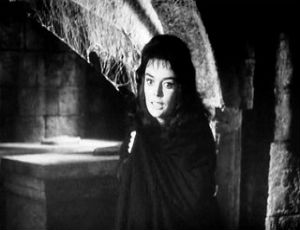After World War II, the horror film genre was nearly dead. Hollywood was producing comedic satires of movie monsters like “Abbott and Costello Meet Frankenstein” and dozens of nuclear-fused, giant bug and outer space films. Beginning in the late 1950s, British, Italian and French movie makers delved into fresh re-workings and re-imaginings of the gothic traditions. These European movies provided much of the "groundwork" for the horror movie genre today.
In 1956, two Italian filmmakers, Riccardo Freda and Mario Bava, produced a low-budget horror flick, “Lust of the Vampire,” (“I vampiri” in Italian), where the “vampire” is a decadent old countess who needs fresh blood from young women to keep her face and body beautiful. Her dutiful scientist husband commits several murders and drains the blood of the victims to sustain her beauty treatments. This take on the Elizabeth Bathory legend of the Hungarian countess who needed to bathe in the blood of virgins to retain her youthful appearance was a very European theme.
The 1960 French film “Eyes Without a Face” (Les yeux sans visage in French) again used the idea of a grief-stricken scientist father using the outer layer of facial skin from young women to improve his daughter’s severely disfigured face.
The Mask of Satan, aka “Black Sunday” (1960) and Mario Bava’s first solo directing effort, a true gothic masterpiece, treads on the themes of a witch-vampire’s 200-year-old curse being revisited on her descendants. This film reached new levels of graphic gore and, although today it would be considered tame, was actually banned in some countries.
In 1957, the British movie studio Hammer Films premiered a new version of Mary Shelley’s monster in The Curse of Frankenstein. This new treatment, shot in Technicolor, featured an arrogant scientist (Peter Cushing) attempting to play “Creator.” Hammer used bloody gore, a pulsating laboratory, buxom fair maidens and robust action to invigorate the movie.
Later Hammer movies, Horror of Dracula (1958), “The Mummy” (1959) and “Curse of the Werewolf” (1961) all displayed this fresh, full-bodied approach to the genre and subsequently proved to be very successful for a long time.



Add a comment to: Some Chilling Euro-Horror Movies